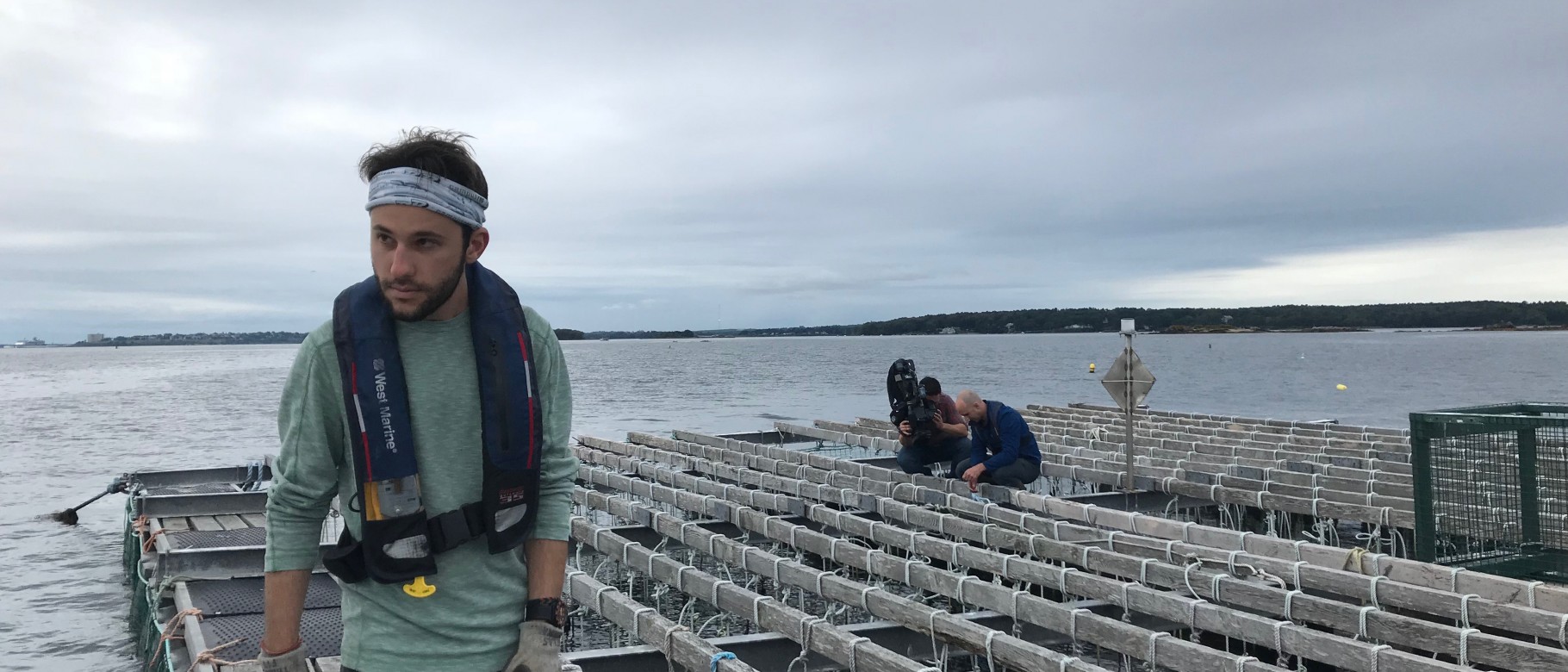Master’s student Connor Jones represents UNE research team at International Workshop for Bivalve Histology

Connor Jones (’19), a master’s student in the School of Marine Programs (SMP) recently returned from the International Workshop for Bivalve Histology at the Department of Oceans and Fisheries in St. John’s, Newfoundland, Canada, where he learned and taught alongside researchers from Sweden, Italy, the U.K. and Atlantic Canada. The researchers were gathered to explore the health of farmed shellfish amidst the effects of climate change on the oceans.
For the past two years, Jones has worked as part of a UNE research team that is studying the health of blue mussels in local waters through the use of histology (the microscopic study of tissues at the cellular level).
According to Jones, the Gulf of Maine, UNE’s oceanic backyard, is warming faster than almost all other places in our global oceans. On the shores of one of the most rapidly changing marine ecosystems on earth, researchers with UNE’s SMP and the Institute for North Atlantic Studies (UNE NORTH) have been immersed in collaborative research with local mussel farms to assess the health of populations of farmed blue mussels.
Funded through a partnership grant via the Northeast Sustainable Agriculture Research and Education program, the team, which works closely with the UNE Histology and Imaging CORE, includes Adam St. Gelais, M.S. ’06, assistant research scientist and UNE NORTH assistant director for science; Assistant Professor Carrie Byron, Ph.D.; and UNE NORTH Executive Director Barry Costa-Pierce, Ph.D.
Jones was invited to represent the team at the workshop after the researchers’ unique approach to characterizing reproduction and energy investment in mussels using image analysis began garnering international interest -- a result of new north Atlantic partnerships fostered by UNE NORTH.
The farming of shellfish, such as oysters, mussels, clams and scallops, is an emerging growth industry across the north Atlantic, but climate change presents challenges to the health of shellfish across the region. The workshop aimed to develop a common set of protocols to follow for north Atlantic researchers seeking to assess shellfish health via histology in the hope that using common methods will make cross Atlantic studies directly comparable.
“If groups across our global region are doing similar research on similar organisms, it only makes sense for us to invest some time into standardizing our methods so that all of our studies and future studies can be comparable,” said Jones. “Changes we are seeing along our coasts may be mirrored along Northern European coasts, further reinforcing the impact climate change is having and the need for collaboration.”
At the workshop, Jones presented and provided instruction on the use of differential tissue staining in conjunction with open source image analysis software to more efficiently and accurately explicate energy storage tissue types in mussels across reproduction, along with long and short-term energy storage (fats and sugars). The ratio of these tissue types can be a direct indicator of organismal heath and resiliency over time.